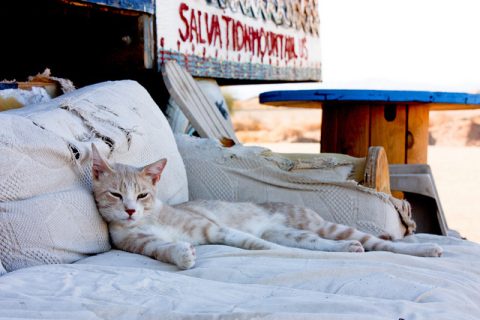Art plays a crucial role in this story. What is your background with art? Do you consider it an important part of your life, as a person and as a writer? What inspired you to use art as the metaphorical vehicle in this particular story?
As a child, I wanted to become an opera singer. Then the lead singer of a band. Then a painter. Then a psychologist, and now a writer. I’ve also always loved to dance, and have just started taking classes and performing modern and improv pieces. For me, there is the impulse to create and then the effort to find the right container or tools for expression. I’m happy to do a number of creative things without worrying too much about my skill level or potential for financial success because I’d rather go toward what moves me. That being said, writing is my main squeeze because it’s one of the forms I find easiest to use to express whatever it is I want to convey or consider. For this story, I wanted an external representation of that feeling—love, or a crush, or awe—that can happen between two people, and Stendahl syndrome seemed a fitting frame. It’s mysterious and overwhelming and shocks a person back into their body and heart. I didn’t want to try to contain this feeling with words.
What piece of art would you love to see in person that you have not seen, and why?
I’ve seen a lot of wonderful visual art in person. I went to see the Sistine Chapel years ago, and found it less moving than the horrific and beautiful sculptures of Jesus on the cross, so skeletal and vulnerable. In the Sistine Chapel, I found myself more interested by the way people were reacting to the art and the sound of people talking, which would rise up like a wave and then be shushed by the security guards. It was such a crowded space, and the pressure of bodies and sound was part of the experience. I’m fascinated by art that is created in silence and isolation and observed in a contrasting context—performance art especially. If I could, I would love to see some dance performances live: “Smoke” by Mats Ek and Sylvie Guillem, or “Café Mueller” by Pina Bausch, or anything by Anne Teresa de Keersmaeker, who did this awesome community dance project last year where she posted online a choreography of a dance she did in the 1980s and encouraged anyone interested to learn it, perform it, and film it. I think modern or more radical dance performances are the hardest art to find after it’s performed—or hardest, at least, for me to find—so it seems the most like a treasure when I witness it.
I love the subtlety of the story, how you slowly reveal narrative information. The intimacy between Emma and Charlotte is such a fleeting moment, but it drives everything else in the story. Can you talk about the difficulties and considerations of crafting a story where so much goes unsaid?
In this story, I was trying to focus more on what could be seen by the reader than said to them. It seemed right for a brief piece about intimacy and art, which are often felt rather than articulated with words. The main challenge in this piece was to find the right words to make the relationship clear to the reader without eliminating too much of the necessary negative space—the wordless, nameless feeling surrounding the characters and what they’d shared. Using other symbols—Stendahl syndrome, the heat of Rome, the pressure of strangers crowding around the characters—helped me convey some of the difficulties of their relationship by establishing mood rather than stating it directly.
This story feels fully realized to me as a piece of flash fiction. At the same time, the characters and setting are rich enough that I can imagine them populating a novel. How do you approach form and length in your writing? What made it clear to you that “The Easy Arm of Adam” would work best in short form?
When I started writing, I wrote mostly poetry. The precision of language choice appealed to my analytical side, and I have always loved the way poetry approaches a specific moment of feeling to try to pinpoint it without confining it. When I write poetry, it feels as if I am trying to see a feeling more clearly rather than make a particular meaning of it, as I do in short stories. Flash fiction feels like a bridge between these two impulses. When I wrote this story, I was trying to understand and make meaning of a feeling, with equal balance. Truth be told, I tend toward compression naturally, so flash pieces feel more manageable to me in terms of clarity and revision.



 The core workshop of SmokeLong Fitness is all in writing, so you can take part from anywhere at anytime. We are excited about creating a supportive, consistent and structured environment for flash writers to work on their craft in a community. We are thrilled and proud to say that our workshop participants have won, placed, or been listed in every major flash competition. Community works.
The core workshop of SmokeLong Fitness is all in writing, so you can take part from anywhere at anytime. We are excited about creating a supportive, consistent and structured environment for flash writers to work on their craft in a community. We are thrilled and proud to say that our workshop participants have won, placed, or been listed in every major flash competition. Community works.